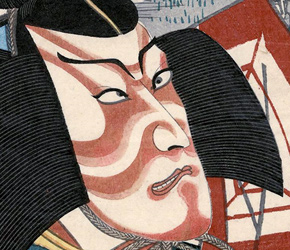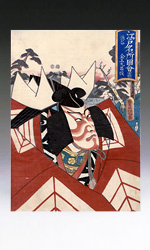Ukiyo-e Woodblock Prints
 |
|
Ukiyo-e, or “pictures of the floating world," is a genre of Japanese woodblock prints and paintings between the 17th and the 20th centuries, featuring motifs of landscapes, tales from history, the theater and pleasure quarters. It is the main artistic genre of woodblock printing in Japan. Ukiyo-e prints were mainly meant for everyday townspeople, who were generally not wealthy enough to afford an original painting. The original subject of ukiyo-e was city life, in particular activities and scenes from the entertainment district. Beautiful courtesans, bulky sumo wrestlers and popular actors would be portrayed while engaged in appealing activities. Later on, landscapes also became popular.
 |
|
Ukiyo-e were first produced in black and white in the seventeenth century. Soon, a demand developed for color prints. Initially, this was accomplished by adding color to the finished black and white print with a brush, which was inevitably expensive and time consuming. Ultimately, a method was developed to create multi-color prints, whereby each color required a different carved wood block. The refinement of this invention is attributed to the artist Suzuki Harunobu (1724-1770), who took the art form to new heights.
Ukiyo-e can be categorized into two periods: the Edo period, which comprises ukiyo-e from its origins in the 1620s until about 1867 and then the Meiji period, which lasted until 1912. The Edo period was largely a period of calm that provided an ideal environment for the development of the art in a commercial form; the Meiji period is characterized by new influences as Japan opened up to the West.
During its time, Ukiyo-e was generally considered commercial art rather than fine art. For example, prints depicting images of the Japanese theater were almost always commissioned by the theaters and actors as a form of advertising. In fact, prior to the twentieth century woodblock prints were not regarded as an art form worth collecting by the Japanese. It was the Europeans, mainly the Dutch and the French, who discovered the artistic value of Japanese prints during the latter half of the nineteenth century, when large numbers of Ukiyo-e found their way into Europe.
Download this Article: Ukiyo-e Woodblock Prints.pdf